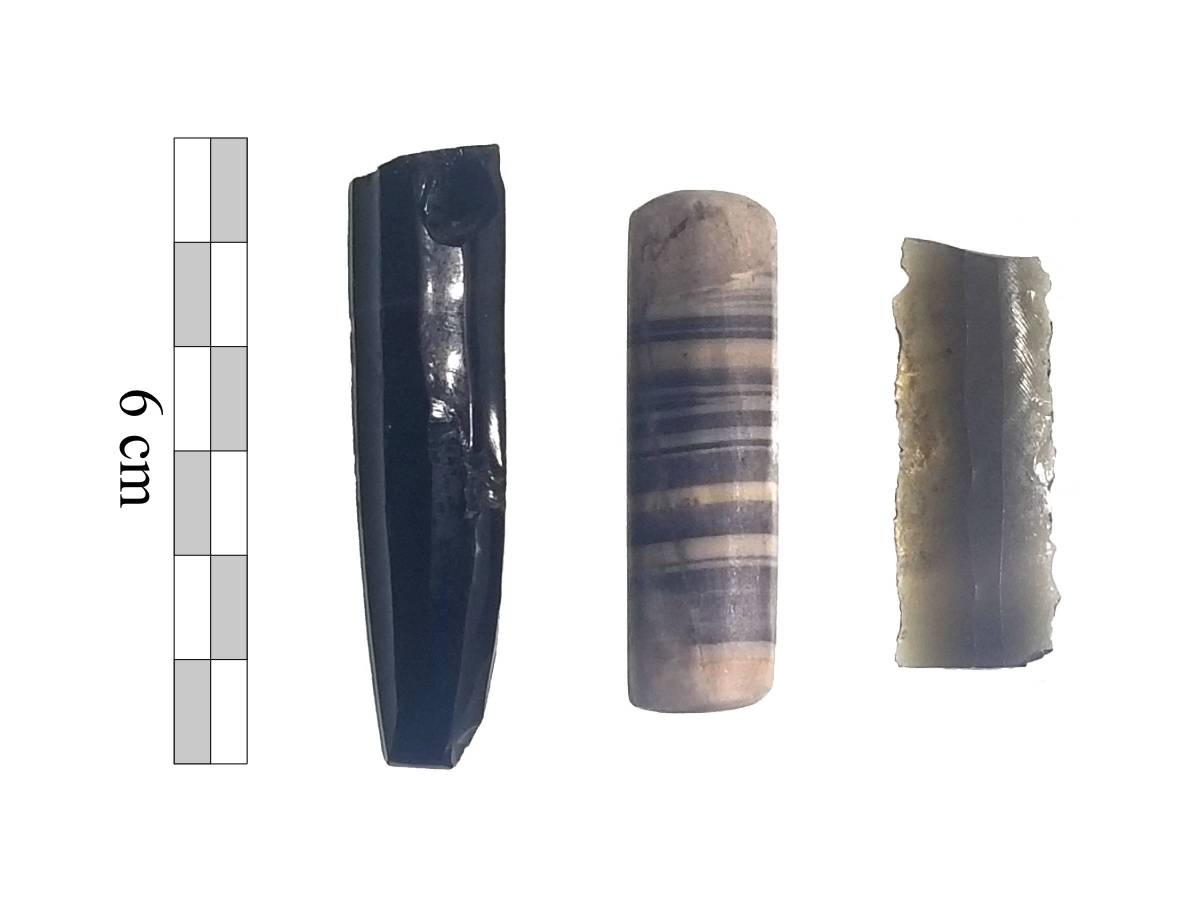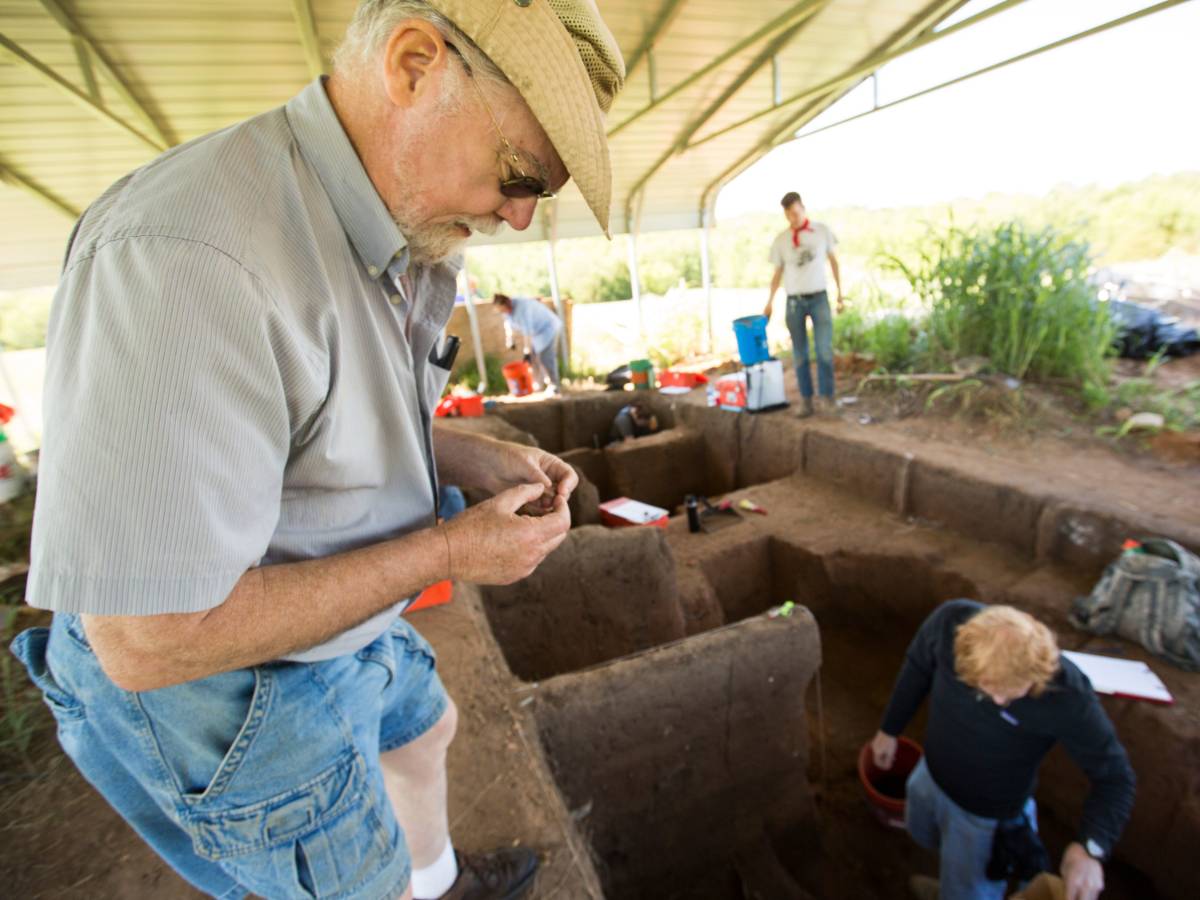The Great Plains has often been overlooked in the history books of North America, but recent discoveries made by a team of Wichita State University archaeologists are rewriting the history of where the beating heart of North American actually was in the pre-historic era before the arrival of Christopher Columbus.
According to research findings by Dr. Don Blakeslee, professor of anthropology and archaeologist at Wichita State, it turns out that the Great Plains was much bigger and much more politically and economically influential in North America than previously thought.
In 2018, Blakeslee discovered the forgotten town of Etzanoa outside of Arkansas City, Kansas. But what he didn’t know until now is the true extent of what lies underground: An entire nation of ancestors of today’s Wichita tribe towns — called Quivira — totaling more than 200,000 people, who traded goods all across North America and who even had a previously unknown common language.
While some early Spanish documents mention Quivira, the region’s significance was until now unknown to the modern understanding of pre-historic North America before Columbus.
“It’s going to revolutionize our view of the Great Plains societies, and it already has for me and my students,” Blakeslee said. “Charles Mann wrote (in the book) ‘1491’ about the thriving Native American societies before the time of Columbus in South America, Central America and the American Southeast, but when he talked about the Great Plains, he called them distant and sparsely populated and occupied by hunters and gatherers. No. In its day, Quivira was probably the most important native political unit in what’s now the United States.”
The people who created Quivira arrived in Kansas in the late 1300s, and Quivira was fully formed around 1450. The archaeological evidence shows that they grew crops but also hunted bison in huge numbers. Over 80% of the chipped-stone artifacts from the town of Etzanoa are specialized for processing bison products, and documentary evidence shows that these products were exported from coast to coast.
This discovery shattered the previous understanding of who the people of the Great Plains were — from hunters and gatherers to a continent-spanning unit.
Quivira is barely mentioned in history books because it was as remote as one could get from the early European colonies. Only three Spanish expeditions visited it between 1541 and 1601, and only two of them left documentary records. By the time of the first French visit in 1719, the nation was already in a steep decline.
Its collapse started around 1610, when the Spanish founded Santa Fe and initiated a slave trade based on captives from the plains. The French in Canada and the English in Virginia and South Carolina soon joined them in supplying arms to their native allies in exchange for war prisoners. As a result, raiders from the west had horses and steel-topped weapons, while those from the east were armed with guns. The raids and diseases that Europeans brought to the continent destroyed Quivira around 1700.
Blakeslee’s findings — which he will present at the annual Society for American Archaeology meeting March 30-April 2 — focus on three types of evidence discovered about Etzanoa and Quivira: the documentary evidence, the linguistic evidence and the archaeological evidence.
The documentary evidence
Blakeslee estimates the population of Quivira to have been roughly 200,000, a number that recontextualizes the scale of who occupied the Great Plains. This number is extrapolated from the eyewitness accounts of Etzanoa having a population of 17,000 to over 20,000 people and the presence of 10 or more large towns elsewhere in Quivira.
The town of Etzanoa was originally listed as 22 separate sites until Blakeslee matched the eyewitness accounts to both the archaeological record and to the modern-day landscape. The other large towns discovered are still recorded as clusters of villages rather than large towns.
When recorded more accurately as a connected society of large towns rather than unrelated villages, Blakeslee says, it’s clear that Quivira was much more organized and far-reaching than anyone had previously thought.
The Quiviran people also had hereditary chiefs, priests, interpreters and ambassadors they would send to neighboring nations.
“They were an organized society, one far different from the Hollywood version,” Blakeslee said. “But they have not been given any recognition at all in American history books.”
The linguistic evidence
Evidence in documents from the earliest expeditions to the southwest of the continent shows that some people in Quivira could speak Nahuatl, the language of the Aztec empire. Additionally, Blakeslee has accumulated evidence showing that Nahuatl was the basis for a Lingua Franca, a shared language between speakers of differing native languages, that was in use from Galveston Island in Texas to California, and from Kansas deep into Mexico in pre-historic times. It is the first clear documentation of a pre-historic native Lingua Franca in North America.
Cabeza de Vaca, who was shipwrecked on Galveston Island and later walked to Mexico, was the first European to mention the Lingua Franca. In one passage, he mentioned people who used it would say “xo” (pronounced “show”) to call a dog, and “arraca” to get the attention of a person.
Blakeslee, through a chance encounter during a Day of the Dead celebration in his neighborhood, met an individual from Guadalajara who confirmed the words to be Nahuatl, and even corrected the meaning of “arraca” to mean “welcome” instead.
“Here was the clincher,” Blakeslee said. “Two words that are still in use that fit the context.”
The archaeological evidence
The land area of Quivira was at least as large as the Republic of Ireland, with the currently documented borders being from the Kansas River in the north; the town of Larned, Kansas in the west; east into Missouri; and south into Oklahoma.
Documents from the DeSoto expedition of 1539-1542 indicate large quantities of Quiviran bison products as far east as Florida, Georgia and South Carolina, including meat, robes and war gear such as rawhide shields, helmets and body armor that filled a room in a town in South Carolina. At the same time, other expeditions documented bison rawhide shields in use on the west coast of Mexico and along the Colorado River between Arizona and California. Tobacco pipes made by Quivirans have been found in sites created by the Apache, Pawnee, Missouria and Caddo tribes and in the pueblos of Pecos and Taos.
The people of Quivira received various items in return. So far, Blakeslee has documented pottery in Quiviran sites that came from North Dakota, Nebraska, Colorado, Oklahoma and Texas. These archaeological sites have yielded the northernmost example of a type of pottery made in the vicinity of El Paso, and the southernmost example of a type made in central North Dakota.
The items that traveled the farthest are pieces of obsidian from central Mexico and Jalisco, far down the west coast. So far, Quiviran sites have yielded more of the central Mexican obsidian than all of the rest of the archaeological sites in the United States.
 Courtesy
CourtesyAn experience of a lifetime
Wichita State students working on this research with Blakeslee are receiving a hands-on learning experience they’ll likely never forget.
Kait Carter is a WSU graduate student majoring in anthropology who has found a passion in uncovering and illuminating the history of the site.
“There’s so much knowledge out there that could be acquired, and just reconstructing history is extremely interesting,” Carter said. “I wish a lot more people were in the field to try and help.”
Brogan Gillmore, a graduate student majoring in anthropology with a focus on public archaeology, is equally as excited to share the discoveries being made in the Great Plains.
“The work we are doing here at WSU is really phenomenal,” Gillmore said. “We’re seeing a lot of amazing stuff. It blows your mind.”
About Wichita State University
Wichita State University is Kansas' only urban public research university, enrolling almost 22,000 students between its main campus and WSU Tech, including students from every state in the U.S. and more than 100 countries. Wichita State and WSU Tech are recognized for being student centered and innovation driven.
Located in the largest city in the state with one of the highest concentrations in the United States of jobs involving science, technology, engineering and math (STEM), Wichita State University provides uniquely distinctive and innovative pathways of applied learning, applied research and career opportunities for all of our students.
The Innovation Campus, which is a physical extension of the Wichita State University main campus, is one of the nation’s largest and fastest-growing research/innovation parks, encompassing over 120 acres and is home to a number of global companies and organizations.
For more information, follow us on Twitter at www.twitter.com/wichitastate and Facebook at www.facebook.com/wichita.state.


 Matt Gush
Matt Gush